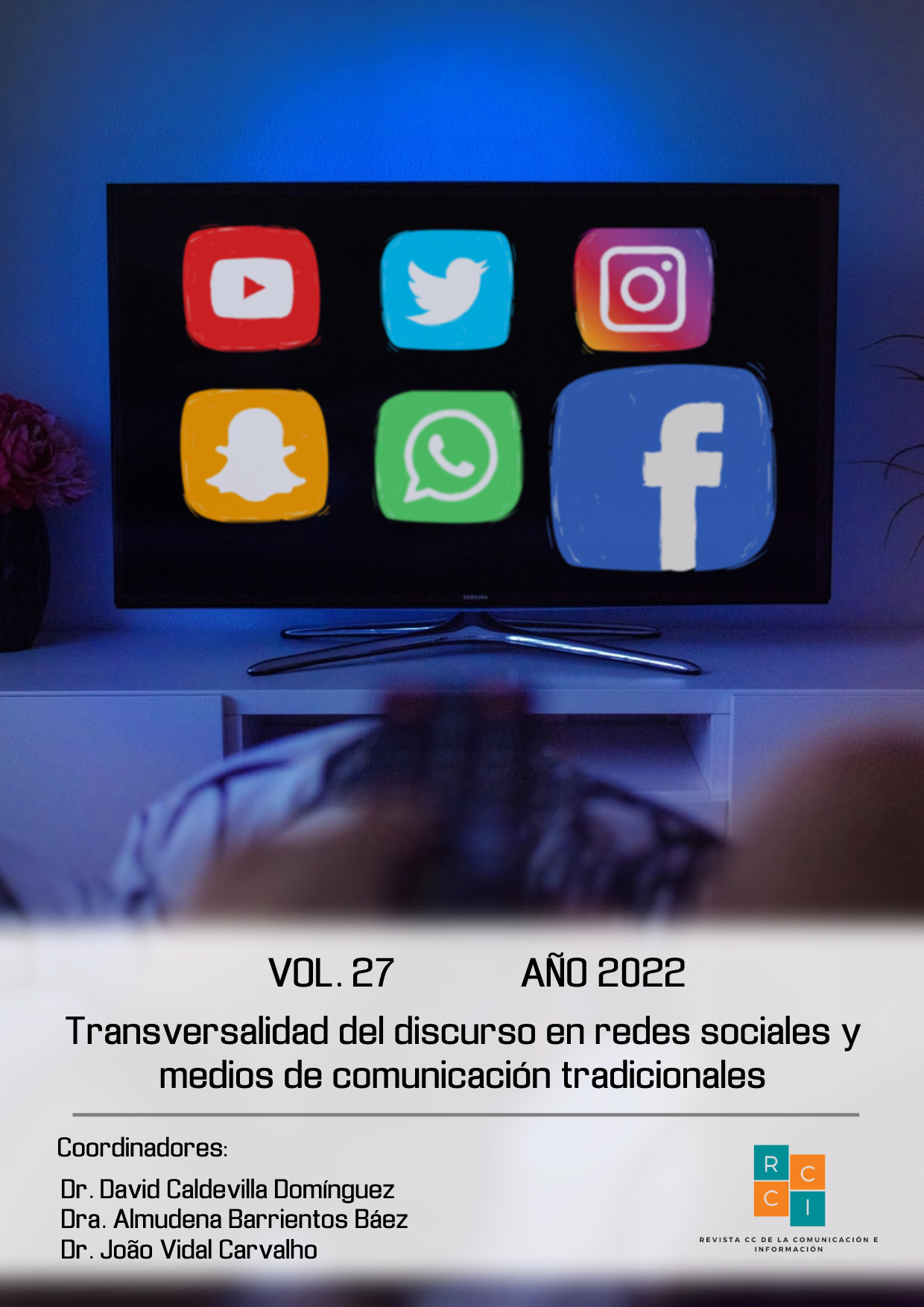TRANSVERSALITY OF DISCOURSE IN SOCIAL NETWORKS AND TRADITIONAL MEDIA
Main Article Content
Abstract
Open call from October 25, 2021
Social networks allow different user segments to reveal their motivations, habits and interests by making their demands for products and/or services explicit. Interactivity through Instagram, Twitter, LinkedIn and Facebook, among others, facilitate the flow of information minute by minute, including a fertile feedback, so that the actors are obliged to show the best of themselves, of their public image, in each intervention (Barrientos et al., 2019). Networks are already essential for anyone who wants to be interconnected, informed and related to everything that happens beyond their immediate personal environment. However, the mass media, also known as "traditional" media, continue to play a leading role in the provision of knowledge, establishing themselves as a fundamental source for a large part of the population.
The proliferation of platforms, digital media and the transition from the unidirectional Web 1.0 to the intuitive and multirelational Web 4.0 have increased the level of dialogic interaction between organizations and their audiences and, even further, between them and each other. This has meant a radical modification of the communicational and relational framework, since it is the organizations themselves, directly and proactively, that seek and even request feedback from their users.
The Journal of Communication and Information Sciences calls for the submission of articles that analyze, both from the point of view of professional practice and of the purest academic research, the characteristics of the discourse offered through social networks: their transversality, their complementary or supplementary relationships with traditional media or their discrepancies in form and content. The aim is to determine what are the communicational advantages/risks/limits that can be produced in this circumstance and what is the position, reflection and mobilization of users. The relevance of the quantitative data extracted from the analysis of the use of social networks is interwoven with the emotional or qualitative aspects produced-searched-obtained, so that analysts can contribute their research to the same degree of importance for the creation of an action map.
Keywords: communication, mass media, audiences, social networks, users.
Reference:
Barrientos-Báez, A., Caldevilla-Domínguez, D. and Vargas-Delgado, J. J. (2019). Protocol, staging and persuasion in televised political debates. Redmarka. Journal of Applied Marketing, 23(3), 17-27.
https://doi.org/10.17979/redma.2019.23.3.5872
Downloads
Article Details

This work is licensed under a Creative Commons Attribution 4.0 International License.
- Share — copy and redistribute the material in any medium or format
- Adapt — remix, transform, and build upon the material
Under the following terms:
-
Attribution — You must give appropriate credit, provide a link to the license, and indicate if changes were made. You may do so in any reasonable manner, but not in any way that suggests the licensor endorses you or your use.
-
NonCommercial — You may not use the material for commercial purposes.

